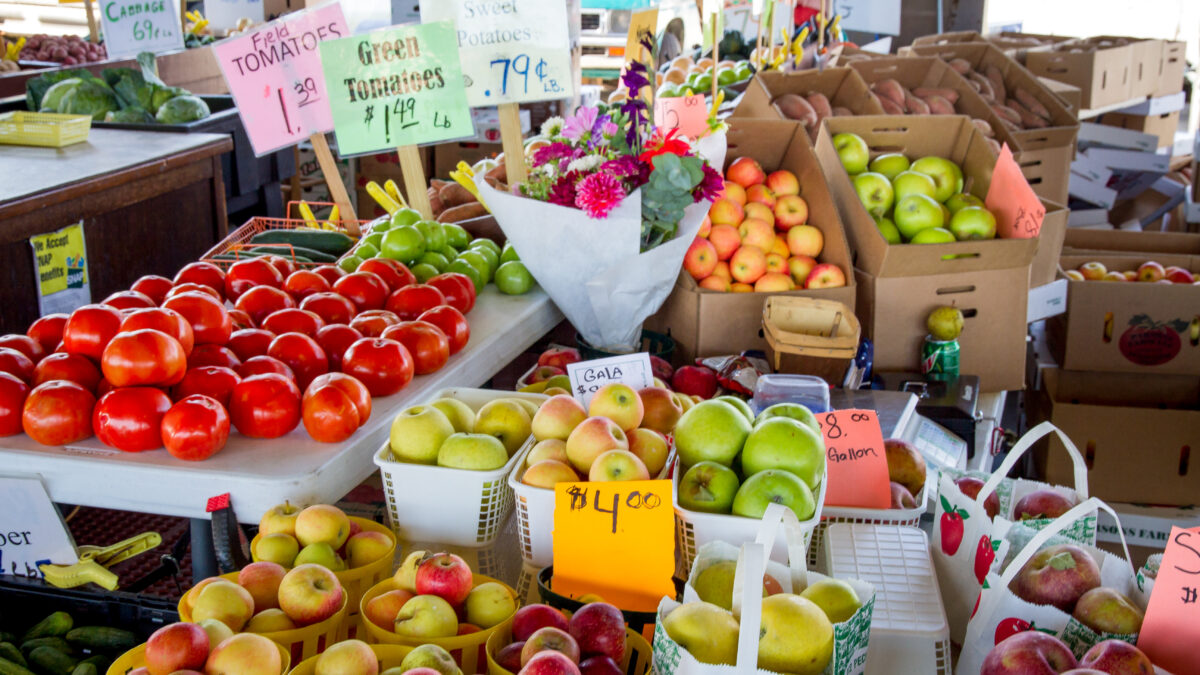Online Farm Directory Gives Consumers More Local Food Options
TOPICS
Covid-19Erin Anthony
Director, Communications

photo credit: North Carolina Farm Bureau, Used with Permission
A recently launched online directory of farmers who sell their produce, meat, dairy products and other food items directly to consumers is giving residents of Maryland, Washington, D.C., Virginia and West Virginia an affordable alternative to supermarkets. For many of the participating farmers, being included in the directory fills a market void created by COVID-19-related restaurant and school closures.
“Marylanders are looking for ways to provide safe and nutritious food for their families as we continue to shelter at home during this crisis. We are humbled and honored that many families are choosing to go to local farmers' markets and roadside stands to find high-quality food to take home. This new online directory is helping people in the Mid-Atlantic region find more locally grown food while helping to maintain good social distancing . We also hope that people will be encouraged to continue to buy local after this situation is over,” said John Torres, executive director of the Maryland Farm Bureau.
Launched in March by the Maryland Farmers Market Association, Future Harvest, the Metropolitan Washington Council of Governments and Delmarva Grown, the directory features an interactive map of farms, farmers’ markets, butchers, farm retail stores and more. From a few hundred farms and retail outlets, the map has grown to include more than 500 and has garnered more than 51,000 page views.
Amy Crone, former executive director of the Maryland Farmers Market Association, says the online directory, which she was instrumental in launching, provides much more than an additional revenue avenue to farmers.
“I wanted people to see how resilient local food systems are,” Crone explained. “Even in crisis, farmers continue to provide for their communities.”
There’s a considerable consumer benefit too.
Supermarket shoppers are understandably wary about risking their or their family’s health by being out in public and, in some cases, frustrated they can’t get the products they want. They’re also increasingly interested in where – and who – their food comes from.
The directory can help address all three of customers’ concerns, according to Crone.
First, many farms and food retailers represented on the map allow people to order online or over the phone and pay in advance, so when the customer shows up at their appointed time, their interactions with other people are limited. Second, if it’s yogurt or a certain cut of beef a customer is looking for, they can find an outlet via the map and call to make sure the farmer has what they’re looking for on hand. Third, people want to support their local farmers and feel like they know who grew the food they’re feeding their families, but before the pandemic they just didn’t have a compelling reason to make the effort. For many, the coronavirus has become that compelling reason.
Crone said she’s optimistic the relationships farmers are making with consumers through direct sales will be a lasting one.
“Hopefully we’re not just changing people’s habits temporarily. Now that someone has met a local farmer or been on the farm, I’d love to see them keep that connection and support these local businesses,” she said.
That farmer-consumer connection is not the only thing that’s stood out to Crone, who noted that on both sides – farmer and consumer – there are people participating in direct buying and selling who had previously bought and sold farm goods through more prevalent outlets, like grocery stores and restaurants.
“I’ve also seen a lot of farmers working together,” she added, describing a newly forged partnership between a dairy farmer and a farmer who sells meat through a CSA. COVID-19-related closures had cut the dairy farmer off from his major purchasers, prompting the CSA farmer to offer retail space at her farm for the dairyman’s yogurt and milk.
Crone is now project manager for MarketLink, which helps increase the acceptance of the Supplemental Nutrition Assistance Program at farmers’ markets and by direct marketing farmers nationwide. A program of the National Association of Farmers Market Nutrition Programs, MarketLink provides technical assistance and equipment to either farmers or markets that want to accept electronic payments – including credit and debit. Funded by USDA, the program helps farmers and markets accept SNAP through the TotilPayGo app (developed by Novo Dia Group), which is the only mobile means of accepting SNAP.
MarketLink recently launched a national map on its website to help SNAP participants find SNAP-authorized farmers as well as provide a connection for all consumers seeking local farmers across the country. Similar to the Mid-Atlantic map, Crone hopes the effort will foster stronger connections between consumers and farmers and bolster sales of fresh produce from local growers, potentially offsetting losses from COVID-19-related closures of other sales outlets.
According to Crone, the coronavirus pandemic has increased the need for programs like MarketLink, which began in 2013 and is a long-term vision of sustainability for farmers and markets through providing a broader customer base, increased electronic sales and higher profitability.
Farmers in the mid-Atlantic region who would like to be included on the Maryland-Virginia-D.C.-West Virginia local food resources map can fill out the form found here.
Farmers and markets interested in getting equipment to accept SNAP as well as credit and debit can apply to MarketLink here.
Trending Topics
VIEW ALL